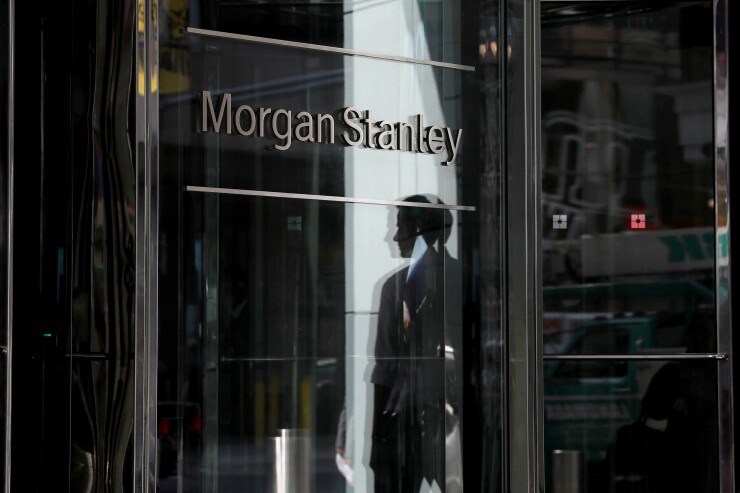Investors cheering Morgan Stanley and Goldman Sachs' knockout third-quarter results may just be setting themselves up for a sucker punch.
On Tuesday morning, both banks reported better-than-expected earnings. Goldman’s bottom line was up 19%, and Morgan Stanley’s profit was up 17%. The robust results from the two Wall Street powerhouses, in a quarter when other rivals stumbled, could be seen as a sign that the two banks are back from the financial crisis with more diversified and solid foundations. In truth, it’s a sign that they never truly left the businesses that have led them both to booms and busts in the past.
Consider Goldman. The firm got 36% of its revenue from its trading desk and 23% from investment banking. Five years ago, Goldman got 39% of its revenue from trading and 20% from investment banking. KBW analyst Brian Kleinhanzi expects Goldman in 2020 to get 39% of revenue from trading and 20% from investment banking. So much for the sweeping transformation, or even an expected one.
The crash of 2008 was intense but, in hindsight, short-lived. Market gains began a few months afterward and have continued with few exceptions.
Morgan Stanley is a slightly different story, but not as different as it looks. Morgan Stanley’s business has changed since the financial crisis. It gets much more of its revenue from asset management, which is viewed as less risky, than from either trading or investment banking — 46% in the third quarter. But again that isn’t expected to change much through 2020. What’s more, Morgan Stanley can attribute its third-quarter performance to its investment bank, namely debt underwriting, which did $280 million more in business than expected. The firm’s traders, particularly the stock traders, also brought in $50 million more in revenue than had been expected.

There is a sense that the financial crisis and the regulation that came after it significantly altered Wall Street. The Volcker Rule was supposed to stamp out proprietary trading, essentially reducing the big bank traders to toll takers, collecting commissions as their clients entered and exited the market. That’s led generally to the belief that volatile markets, with their higher volumes, are good for Wall Street’s big firms.
But third-quarter trading results for the big banks were a big jumble. JPMorgan Chase's fixed-income trading was down, but its equity trading was up big. At Citigroup, it was the opposite. Bank of America’s trading results were ho-hum. But Goldman’s fixed-income trading fell 10% while its stock-trading business rose 8%.
Morgan Stanley’s recent trading dominance has cooled. Goldman is on the rebound but still has some work to do. It’s not as if these are start-ups that are launching new products, or even Tesla trying to prove with its earnings that it can make an assembly line work. This is the business they have always been in. And investors, who want to take this ride, will have to be on the edge of their seat next quarter to see whether these banks perform. And given the market’s recent rockiness, they could be in for a surprise. There’s a reason the shares of Goldman and Morgan Stanley trade at a significant discount to the market, and they aren’t doing much to change that.






